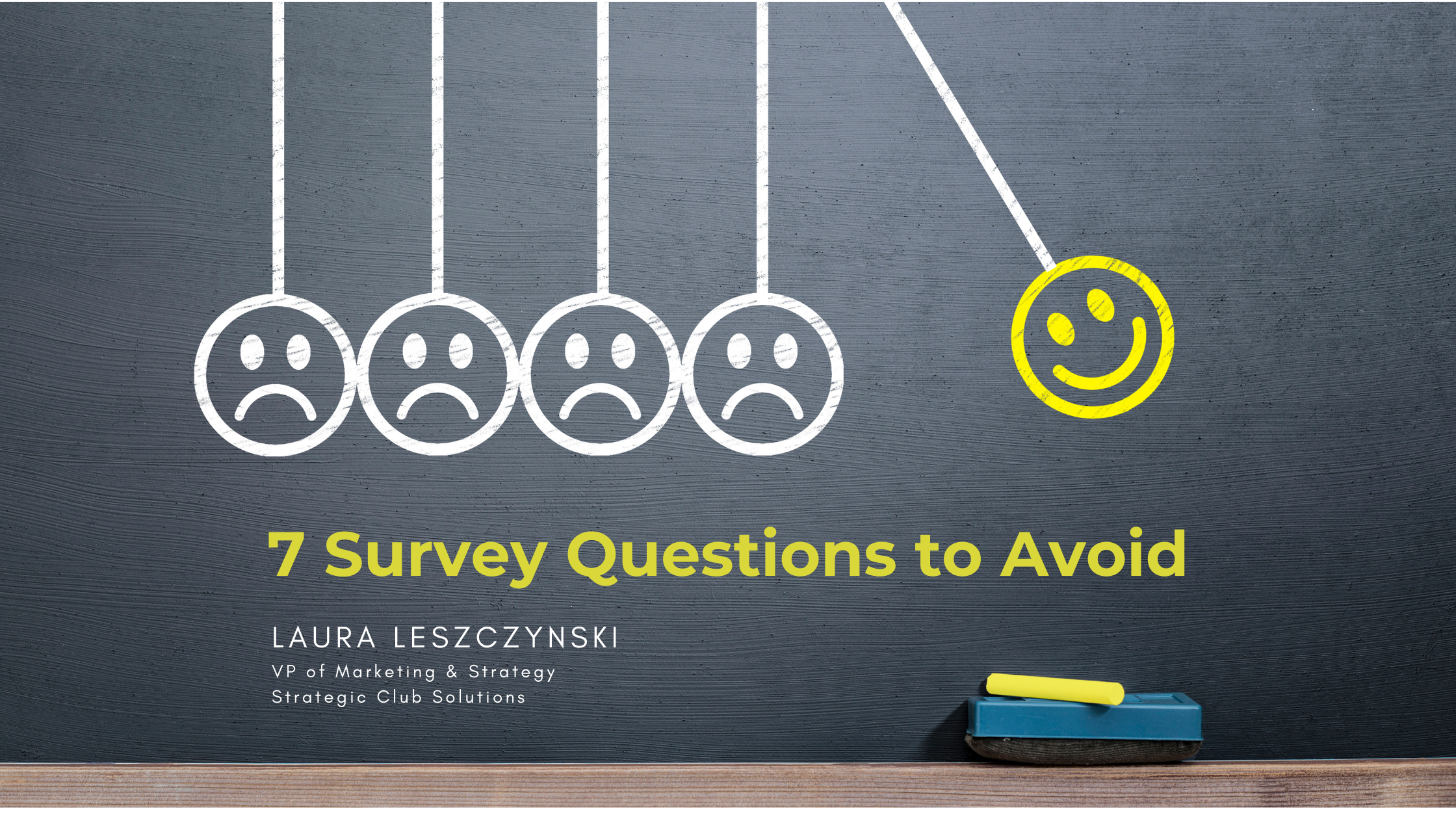
Have you ever sent a member survey and realized in hindsight that the data didn’t give you the clarity you hoped for or the questions were misleading? While perfection is a hard target, missing the bullseye can muddy your data and derail important business decisions.
Let’s take a look at the 7 most common survey pitfalls and how you can avoid them.
Leading questions are those that use biased language. This language influences the survey taker’s selection. The problem with a leading question is that it can seem innocuous, but actually be fishing for a certain answer. When you use leading questions, you’re not getting actionable, accurate data that can help guide business decisions.
What to do instead: Make sure that questions are clear and simple—and refrain from using adjectives like “amazing” that are highly subjective and likely to influence responses. For example, “Please rate your level of satisfaction regarding the dinner menu offerings?”
Assumptive questions make assumptions about what the member knows and feels without taking a step back and considering where the member actually stands. These questions leave out essential information that is necessary to understand the member. They are similar to leading questions in that they inadvertently encourage members to respond in a certain way.
What to do instead: Don’t assume. You don’t know if they play golf. Be sure to create big-picture questions that set context like “If you golf, do you want tee times?” One can answer, yes, no, or not applicable.
A pushy question forces survey-takers to make a choice and push respondents toward particular favored answers. Usually, these questions require a respondent to choose from a list with too few categories, preventing them from answering accurately and not reflecting their true activity and feelings.
What to do instead: As always, put yourself in your respondent’s shoes. Consider whether the question is open-ended, or may push the survey-taker in a certain, favorable direction. An example of how to make this clean would be to ask “How does our country club compare to other clubs in the area?”
Without meaning to, you may be creating questions that are confusing to survey-takers. These confusing questions may be poorly worded questions and/or responses, be illogically formatted, or be the wrong question type for the matter at hand.
What to do instead: Avoid double negatives at all costs. In general, using negatives can be confusing. Try to use clear, concise statements and questions to get your meaning across. For example, “On a scale of 1-10, how helpful was the membership team when you joined the club?”
Double-barreled questions squeeze too much into one question, making it difficult for a survey-taker to answer accurately. Sometimes, these double-barreled questions are two questions at once, which can confuse respondents and make data analysis difficult.
What to do instead: Make sure your questions are asking for one answer to one main idea. You can split the questions. For example, “How satisfied are you with the golf course conditions? How satisfied are you with the quality of the dining services?”
Ambiguous questions are far too broad. The questions and/or responses leave room for interpretation, which leads survey-takers to guess or default to whatever answer makes the most sense. Often we see the question ask someone to answer for someone else which is speculative and therefore provides little value.
What to do instead: Consider adding a scale. For example, “On a scale of 1-10, how would you rate the cleanliness of our locker rooms?
Random questions are out-of-context and don’t focus on topics that are important or relevant to the survey-taker.
What to do instead: Make sure that all questions you ask are relevant to the survey and its goals.
When it comes to constructing a survey, there’s a lot to consider. But, if you don’t have clean questions that are easy to understand and make sense to the survey-taker, you won’t be able to gain information that can impact your Club. To improve your member experience, you need accurate survey responses that lead you to take action.
We create surveys that are unbiased and guaranteed to give your members a voice. When you work with SCS you’ll get the clean data you need to elevate your Club experience that’s right on target.